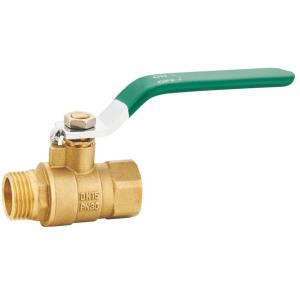

Add to Cart
| Name | Brass Ball Valve |
| Material | HPB57-3,HPB58-3 |
| Brand | KAKA |
| Handle | Lever handle with stainless steel, Iron |
| Media | Water, Seawater |
| Surface | Sandblasted |
| Size | DN15-DN50 |
| Testing | 0.6MPa – 0.8MPa by air |
| Connection | BPS,NPT thread |
| Turn on/off | Fast quarter-turn operation |
| Bronze | Corrosion resistant |
| Features | Adjustable stem-packing gland |
| Specs | Blow-out proof pressure retaining stem |
Proper Installation: Ensure that the brass ball valve is installed correctly according to manufacturer guidelines. Use appropriate sealants, thread tape, or pipe dope on threaded connections to prevent leaks and ensure a secure fit.
Corrosion Protection: Brass is susceptible to corrosion in certain environments. Consider using corrosion-resistant coatings or treatments on the valve body to protect against corrosion. Additionally, installing dielectric unions or isolating flanges can help prevent galvanic corrosion when connecting brass valves to dissimilar metals.
Cleaning and Maintenance: Regularly clean the valve to remove any debris, sediment, or buildup that can hinder its operation. Inspect the valve for signs of wear, damage, or leaks. Lubricate the stem and sealing surfaces with a compatible valve lubricant if necessary.
Temperature and Pressure Considerations: Brass ball valves have specific temperature and pressure ratings. Ensure that the valve is operated within its specified limits to avoid damage or failure. Consider using pressure relief devices or expansion joints when necessary to mitigate excessive pressure or thermal expansion.
Protection from External Elements: Protect the brass ball valve from external factors that can cause damage, such as exposure to harsh weather conditions, UV radiation, chemicals, or physical impact. Use protective covers or enclosures as needed to shield the valve from these elements.
Regular Testing: Periodically test the ball valve to ensure it operates smoothly and effectively. Check for leaks, proper sealing, and unrestricted flow. If any issues are detected, address them promptly to prevent further damage or failure.
Valve Positioning: Properly position and support the valve to prevent stress or strain on the valve body and connections. This includes using appropriate brackets or supports to secure the valve in place.
Brass ball valves can benefit from certain protective measures to enhance their longevity and performance. Here are some ways to protect brass ball valves:
